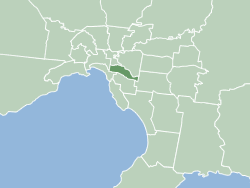
The City of Stonnington is a local government area located within the metropolitan area of Melbourne, Australia. It comprises the inner south-eastern suburbs, between 3 and 13 km, from the Melbourne CBD. The city covers an area of 25.7 km2 (9.9 sq mi).

Malvern ( ) is a suburb of Melbourne, Victoria, Australia, 8 km south-east of Melbourne's Central Business District, located within the City of Stonnington local government area. Malvern recorded a population of 9,929 at the 2021 census.
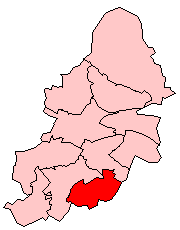
Hall Green is an area in southeast Birmingham, England, synonymous with the B28 postcode. It is also a council constituency of Birmingham City Council, managed by its own district committee. Historically it lay within the county of Worcestershire. The 2001 Population Census found that there were 25,921 people living in Hall Green with a population density of 4,867 people per km2, this compares with 3,649 people per km2 for Birmingham.

Glenferrie Road is a major north–south thoroughfare in Melbourne, Australia. It runs from Kew to Caulfield North, and includes major shopping districts at both Hawthorn and Malvern. There are a number of rail transport options on Glenferrie Road and also some landmarks.

The Sydney Town Hall is a late 19th-century heritage-listed town hall building in the city of Sydney, the capital city of New South Wales, Australia, housing the chambers of the Lord Mayor of Sydney, council offices, and venues for meetings and functions. It is located at 483 George Street, in the Sydney central business district opposite the Queen Victoria Building and alongside St Andrew's Cathedral. Sited above the Town Hall station and between the city shopping and entertainment precincts, the steps of the Town Hall are a popular meeting place.

Prahran Town Hall is a civic building located on the corner of Chapel Street and Greville Street in Prahran, a suburb of Melbourne, Australia.

Regent Theatre was a heritage-listed cinema at 167 Queen Street, Brisbane, Australia. It was designed by Richard Gailey, Charles N Hollinshed and Aaron Bolot and built from 1928 to 1929 by J & E L Rees and A J Dickenson. It was one of the original Hoyts' Picture Palaces from the 1920s. It is also known as Regent Building. The auditorium interior was largely lost when it was converted into a 4 screen complex in 1979–1980, but the building, including the surviving entrance and main foyer, was added to the Queensland Heritage Register on 21 October 1992.
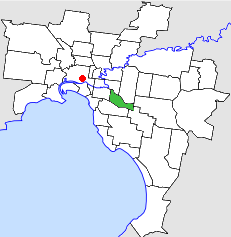
The City of Malvern was a local government area about 9 kilometres (6 mi) southeast of Melbourne, the state capital of Victoria, Australia. The city covered an area of 15.88 square kilometres (6.13 sq mi), and existed from 1856 until 1994, when it was merged with the City of Prahran to create the City of Stonnington.

The City of Prahran was a local government area about 5 kilometres (3 mi) southeast of Melbourne, the state capital of Victoria, Australia. The city covered an area of 9.55 square kilometres (3.69 sq mi), and existed from 1855 until 1994, when it was merged with the City of Malvern to create the City of Stonnington.
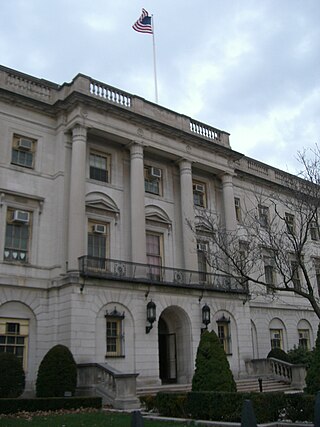
The Chase Headquarters Building is a building in Waterbury, Connecticut on Grand Street across from the city hall. It is now occupied by the city of Waterbury's offices.
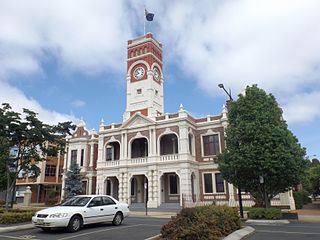
Toowoomba City Hall is a heritage-listed town hall at 541 Ruthven Street, Toowoomba, Toowoomba Region, Queensland, Australia. It was designed by Willoughby Powell and built in 1900 by Alexander Mayne. It is also known as Toowoomba Town Hall. It was added to the Queensland Heritage Register on 21 October 1992.
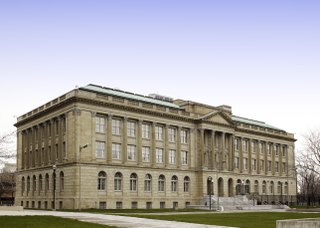
The James M. Ashley and Thomas W.L. Ashley United States Courthouse, formerly the United States Courthouse, Toledo, Ohio, is a courthouse of the United States District Court for the Northern District of Ohio built in Toledo, Ohio, in 1932. It is named for two former Congressmen, Republican James M. Ashley, and his great grandson, Democrat Thomas W. L. Ashley.

Johannesburg City Hall is an Edwardian building constructed in 1914 by the Hawkey and McKinley construction company. The plan for the building was drawn in 1910 and construction was started in 1913 and finished in 1914. The Gauteng Provincial Legislature currently occupies the building. The City Hall has seen many political events on its steps from protest meetings to a bomb blast in 1988.
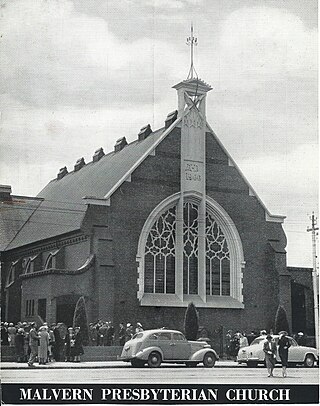
Malvern Presbyterian Church is located in Victoria, Australia. Opened in 1886, it was the first Presbyterian Church to be founded in the City of Malvern and is now within Stonnington, a metropolitan area of Melbourne.
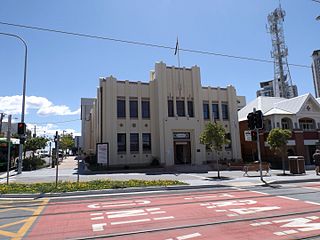
Southport Town Hall is a heritage-listed former town hall at Nerang Street, Southport, Gold Coast City, Queensland, Australia. It was designed by Hall & Phillips and built in 1935 by H Cheetham. It is also known as Gold Coast City Hall, Gold Coast Town Hall, and South Coast Town Hall. It was added to the Queensland Heritage Register on 5 October 1998.

The Gympie Town Hall is a heritage-listed town hall at 2 Caledonian Hill, Gympie, Queensland, Australia. It was designed by Department of Public Works (Queensland) and John James Clark and built in 1939 by Marberete Company Pty Ltd, Department of Public Works, and Joseph Jew. It was added to the Queensland Heritage Register on 12 August 2011.
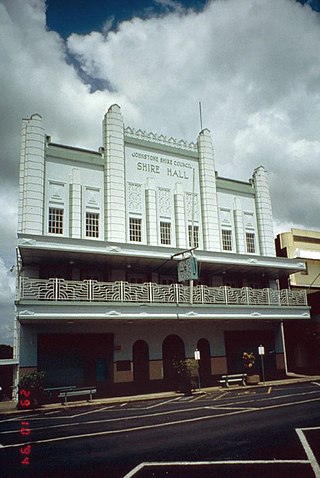
Johnstone Shire Hall is a heritage-listed town hall at 70 Rankin Street, Innisfail, Cassowary Coast Region, Queensland, Australia. It was designed by Hill & Taylor and built from 1935 to 1938 by Van Leeuwen Brothers. It was added to the Queensland Heritage Register on 13 January 1995.
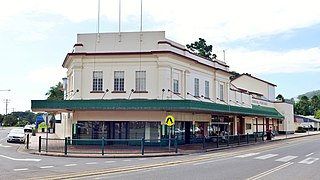
Mossman Shire Hall and Douglas Shire Council Chambers is a heritage-listed former town hall at 8-14 Mill Street, Mossman, Shire of Douglas, Queensland, Australia. It was designed by Hill & Taylor and built in 1937 by Tarmey & Euhus. It was added to the Queensland Heritage Register on 6 August 2010.
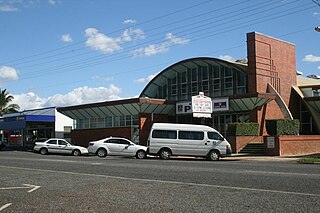
Mareeba Shire Hall is a heritage-listed former town hall at 136 Walsh Street, Mareeba, Shire of Mareeba, Queensland, Australia. It was designed by Eddie Oribin and built from 1960 to 1961 by Ernest William Lepinath. It is also known as Former Mareeba Shire Hall. It was added to the Queensland Heritage Register on 11 October 2013.

Murgon Civic Centre is a heritage-listed town hall at 62–70 Lamb Street, Murgon, South Burnett Region, Queensland, Australia. It is also known as Murgon Public Hall. It was designed by Clifford Ernest Plant and built in 1938 by HG Neilsen. It was added to the Queensland Heritage Register on 9 November 2012.























